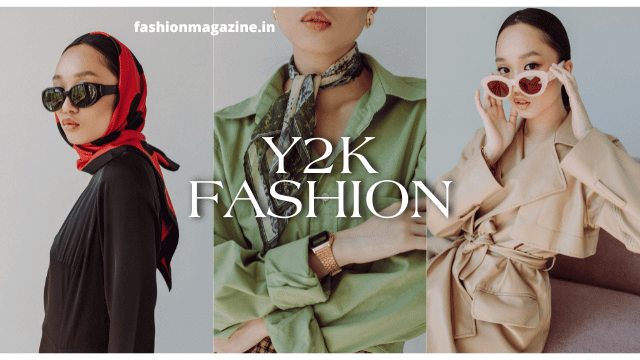Y2K fashion refers to the aesthetic and style trends prevalent during the late 1990s and early 2000s, particularly around the time of the Y2K scare. It encompasses a diverse range of influences, blending elements from pop culture, technology, music, and various subcultures of the era. With the dawn of the new millennium, fashion experienced a notable shift, reflecting the rapidly evolving cultural landscape and the emergence of digital technology.
At the heart of Y2K fashion lies a sense of futurism intertwined with nostalgia. It encapsulates the optimism and excitement surrounding the turn of the millennium while simultaneously drawing inspiration from the past. Y2K fashion is characterized by its boldness, experimentation, and a fusion of contrasting elements.
One prominent aspect of Y2K fashion is its embrace of technology-inspired motifs and materials. Reflective fabrics, metallic finishes, and iridescent textures became staples of the Y2K wardrobe, symbolizing the increasing integration of technology into everyday life. Additionally, cyberpunk influences permeated fashion, with garments featuring futuristic details such as neon accents, holographic prints, and asymmetrical silhouettes.
The rise of the internet and digital culture during the late 1990s had a profound impact on fashion aesthetics. Y2K fashion embraced the ethos of the digital age, incorporating elements of cyber culture and virtual reality into clothing design. This manifested in clothing adorned with pixelated graphics, circuit board patterns, and motifs inspired by video games and computer graphics.
Moreover, Y2K fashion was characterized by a playful and eclectic approach to style, blending elements from various subcultures and fashion movements. Streetwear, rave culture, and haute couture intersected in unexpected ways, giving rise to eclectic ensembles that defied conventional norms. Baggy cargo pants, crop tops, platform shoes, and oversized sunglasses were emblematic of Y2K style, reflecting a mix of urban grit and high fashion glamour.
The celebrity culture of the late 1990s and early 2000s played a significant role in shaping Y2K fashion trends. Pop icons like Britney Spears, Christina Aguilera, and Destiny’s Child influenced mainstream fashion with their daring looks and boundary-pushing style. The rise of teen-oriented media such as MTV further amplified the visibility of Y2K fashion, disseminating trends to a global audience.
In addition to its futuristic and tech-centric motifs, Y2K fashion also drew inspiration from retro aesthetics, particularly the styles of the 1960s, 1970s, and 1980s. Vintage-inspired elements such as mini skirts, psychedelic prints, and disco-inspired sequins made a comeback, reimagined through a contemporary lens. This fusion of past and future aesthetics contributed to the unique and eclectic nature of Y2K fashion.
Beyond its visual aesthetic, Y2K fashion also reflected broader societal shifts and cultural anxieties of the time. The Y2K scare, fueled by concerns about the potential collapse of computer systems at the turn of the millennium, permeated popular consciousness and influenced fashion in subtle ways. The prevalence of metallic fabrics and futuristic motifs can be interpreted as a reflection of this collective anxiety, as people grappled with uncertainty about the future.
In retrospect, Y2K fashion remains a fascinating and enduring phenomenon, encapsulating the spirit of a transformative era marked by rapid technological advancement and cultural upheaval. Its eclectic blend of futuristic, nostalgic, and avant-garde elements continues to inspire contemporary designers and fashion enthusiasts, serving as a testament to the enduring influence of the turn-of-the-millennium aesthetic.

